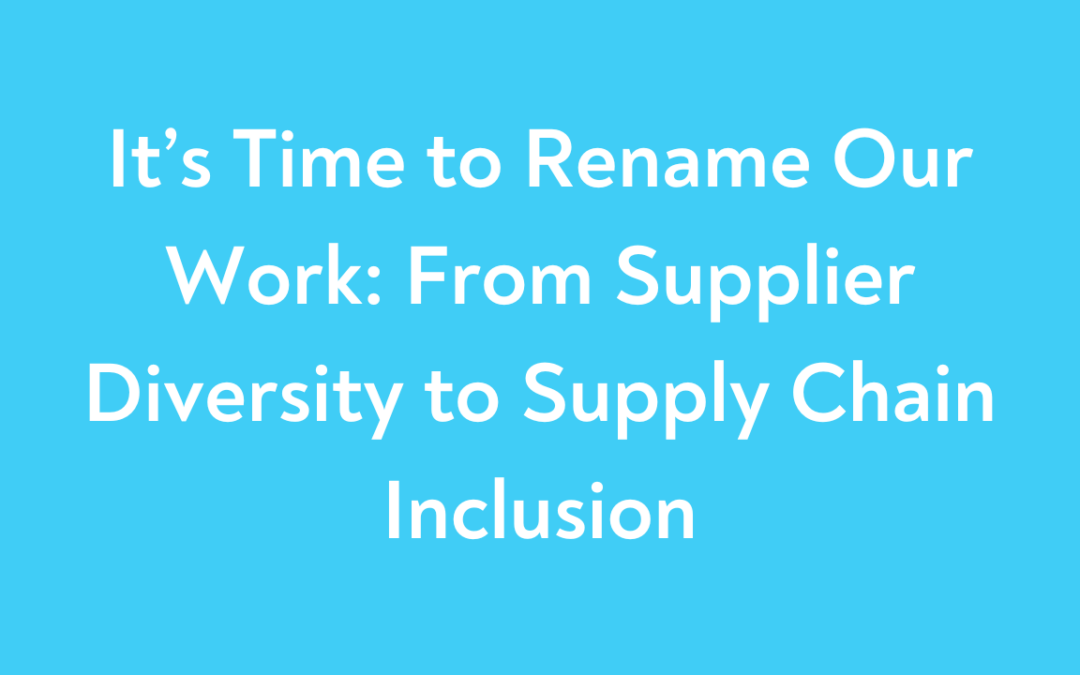The field of supplier diversity has made significant strides in promoting diversity within corporate supply chains. Still, the terminology surrounding it can often be confusing or opaque, resulting in ambiguity about its goals and scope. As the industry continues to evolve, so too should the language we use to describe it. It’s time we switch our focus from ‘supplier diversity’ to ‘supply chain inclusion.’
There are several reasons why ‘supply chain inclusion’ is a more fitting phrase. At the most fundamental level, ‘supply chain inclusion’ more accurately communicates the broad scope and multifaceted nature of the work that supplier diversity professionals do. Supplier diversity can sometimes be interpreted as simply a ‘numbers game’ – checking off boxes to ensure a certain percentage of diverse suppliers are included in a company’s procurement process.
‘Supply chain inclusion’ also underscores the need for continual and active engagement in the diversity mission. It suggests a conscious effort to ensure the participation of marginalized suppliers at all levels of the supply chain. By its very nature, the term prompts action, urging us to look beyond simply including diverse suppliers and strive towards fully integrating them into all aspects of the procurement process.
Finally, ‘supply chain inclusion’ puts the emphasis on ‘inclusion’ – a word that signifies not just diversity but also acceptance, support, and equal opportunity. It implies a commitment to creating an environment where every supplier, regardless of their background, has the opportunity to succeed and grow. Inclusion goes beyond mere representation; it is about creating equal access to opportunities and actively removing barriers that prevent marginalized suppliers from fully participating in the supply chain.
Switching our language to ‘supply chain inclusion’ will not, in and of itself, solve all the challenges facing our industry. However, by more accurately reflecting our mission and goals, it can help clarify our purpose and guide our efforts.
The change in language will not magically resolve all the challenges faced by our industry. However, by better reflecting our mission, it can serve to guide our strategies, practices, and actions towards achieving our goals.
Key Takeaways
- Greater Accuracy: ‘Supply chain inclusion’ provides a more accurate depiction of the multifaceted nature of the work we engage in. ‘Supplier diversity’ can often be misconstrued as a ‘numbers game’ where the objective is merely to meet a quota of diverse suppliers. However, the aim is to establish an inclusive procurement process and corporate supply chain that supports diverse suppliers at every stage—from identification and onboarding to their growth and sustainability.
- Active Engagement: The term ‘supply chain inclusion’ highlights the need for active engagement in the mission of diversity. It suggests an ongoing effort to involve marginalized suppliers at every level of the supply chain. The term doesn’t merely encourage the inclusion of diverse suppliers but advocates for their full integration into all aspects of the procurement process.
- Emphasis on Inclusion: The shift to ‘supply chain inclusion’ places the focus on ‘inclusion.’ This term signifies more than diversity—it embodies acceptance, support, and equal opportunity. Inclusion goes beyond representation; it involves creating equal access to opportunities and actively eliminating barriers that might hinder marginalized suppliers from full participation in the supply chain.
- Broader Scope: The term ‘supply chain inclusion’ reflects a broader scope, covering all aspects of the procurement process and the supply chain. It acknowledges the role of all stakeholders involved—from procurement professionals and decision-makers to suppliers and customers—in fostering an inclusive environment.


Recent Comments